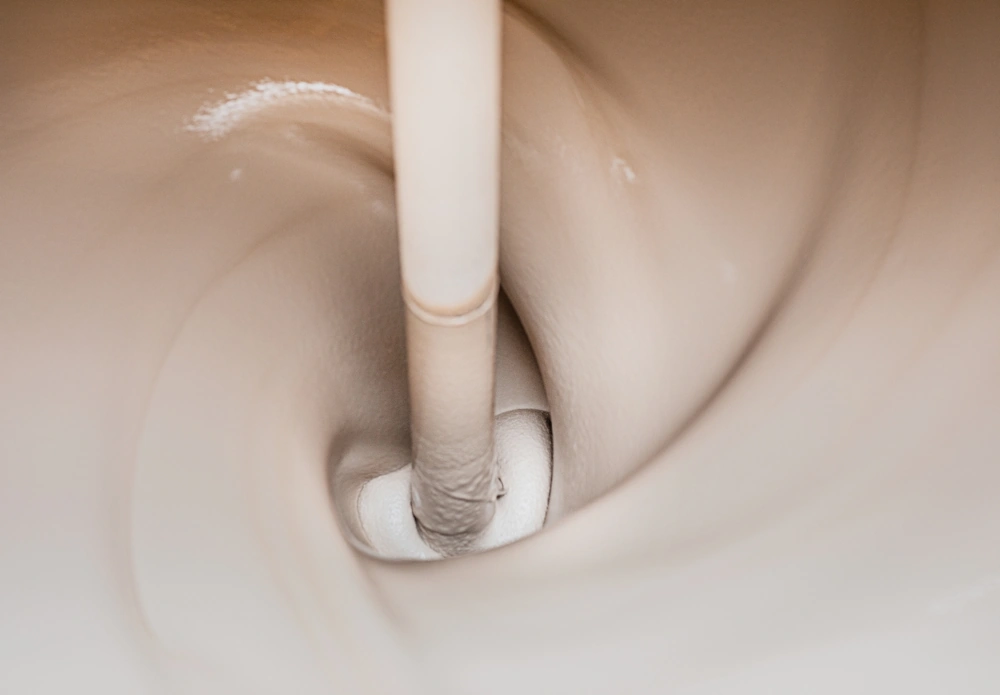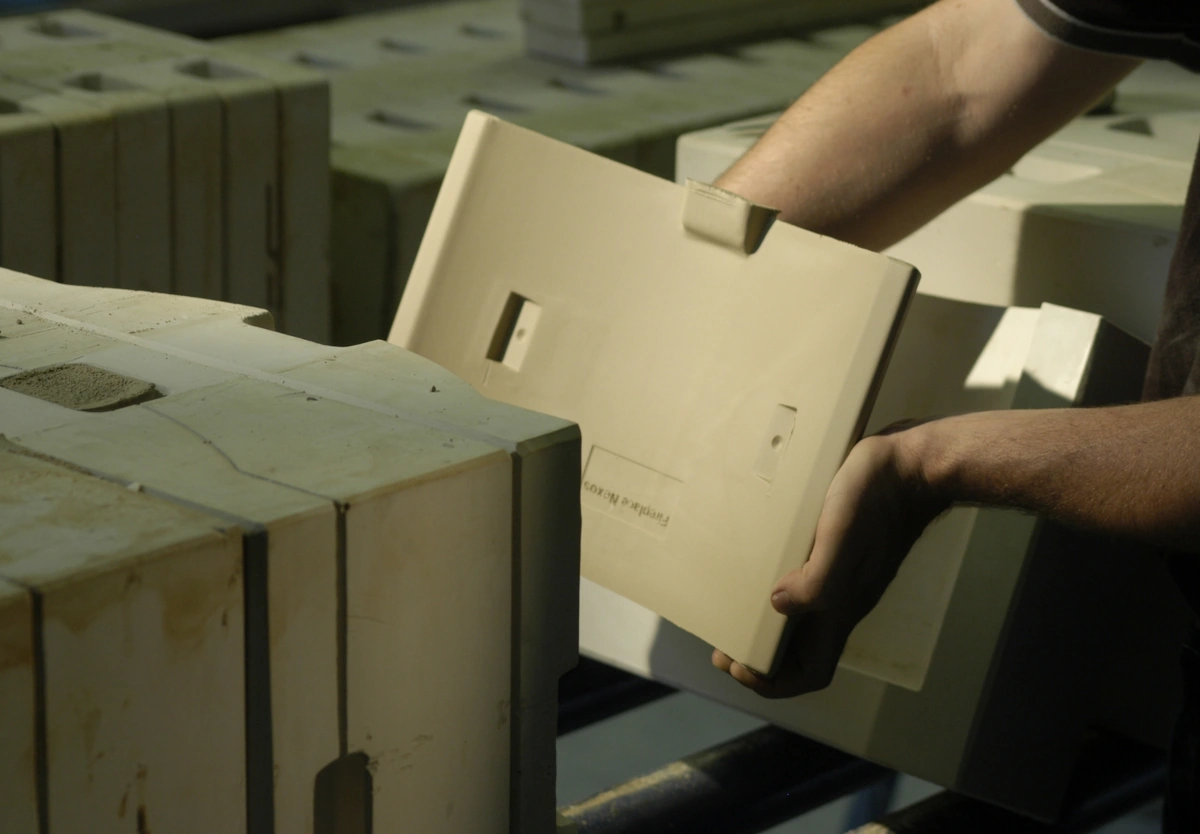Leipfinger-Bader expands product range with artistic cast ceramics for the Tonality facade
New areas of application in new builds and refurbishments, complex façade structures, special design features: Leipfinger-Bader is expanding its portfolio of Tonality facade ceramics to include cast elements. The special casting technique is characterized by a sophisticated material composition and can be executed in solid or hollow casting. The new process enables the creation of complex geometries and components that are difficult to realize with the conventional pressing process. The cast ceramic impresses with its proven high durability and longevity and its special design features such as random color nuances. With the expansion of the product range, Leipfinger-Bader now offers solutions for the façade surface as well as molded and special parts from a single source.
Manufacturing geometrically complex components using casting technology: This is now made possible by a new manufacturing process from Leipfinger-Bader. In collaboration with a renowned specialist for cast ceramics, the company is now offering completely new design options for façades and other areas under the brand name Tonality. “The guiding principle is to stand out from the crowd and create something unique and special,” explains Thomas Bader, Managing Director at Leipfinger-Bader. “As usual, our new cast ceramics are customised to the customer’s wishes and rounded off with a special handcrafted character.”
Nothing was left to chance in the creation of this project.
The basis for successful production is the casting slip, the consistency of which is based on years of research. Materials such as kaolin, feldspar and quartz as well as chamotte are mixed with water, liquefier and, if necessary, colour pigments. The liquefier is added to reduce the amount of water and thus minimise the susceptibility to shrinkage and defects. The selection, quantity and composition of the raw materials must be optimally harmonised in all parameters so that, in combination with an intensive mixing process, the desired consistency of the casting slip is ultimately achieved.
Casting, firing, demoulding
Another challenge is the production of the casting mould. Leipfinger-Bader works together with experienced model makers from the Westerwald and Spain. After moulding, the ceramic elements must be carefully dried and fired at high temperatures. This requires precise temperature and time settings in order to avoid errors. The so-called demoulding of the cast part is particularly challenging with complex moulds, so special techniques are used here if necessary. The firing process is followed by surface treatment to reduce unevenness and, if necessary, to achieve special decorative effects.
Effect glazes on complex geometry
The casting process can also be used to create complex geometries. Solid casting is characterised by a robust structure and high strength, as the element is completely cast. In contrast, hollow casting enables the production of objects with a hollow internal structure, such as vases. Hollow casting naturally has a lower strength than solid casting, but also has a lower weight. The moulds can be finished as desired in a design-oriented manner. Random colour nuances, a uniform colour pattern, colour gradients and effect prints make each piece unique. Effect glazes in particular create a different effect than on a straight geometry. The possibility of presenting facade ceramics and window sills or other transitions and details in a uniform design, for example, proves to be particularly valuable from an architectural point of view.

Sustainable in all respects
Like conventional Tonality facade ceramics, cast ceramics also offer many advantages: they are characterised by high chemical resistance, thermal stability, wear resistance and corrosion resistance. Ceramic is also fire-resistant and is suitable for increased fire protection requirements. It is also highly resistant to cleaning. In addition to its durability, the casting process itself is also sustainable, as there is no material waste from cutting or machining. The moulds are reused as often as possible. Recycled ceramic material can even be used in some casting processes. This helps to reduce the amount of waste and promote a circular economy.
New possibilities
Particularly in art, architecture and construction, cast ceramic elements open up completely new design possibilities. For example, roof elements, window cornices, highly complex facades, ornaments, relief panels, columns, architectural details, sculptures or art objects can be produced – and any other shape. In future, completely new areas of application are also conceivable in new builds and renovations. This is because the casting process can be used to create complex moulds with integrated functionalities. For example, ceramic elements could be developed for the construction of intelligent buildings that contain sensors, conductor paths or even active components to react to environmental conditions or generate energy.
Full range for facade design
With the addition of Tonality cast ceramics to the product portfolio, Leipfinger-Bader has created the possibility of a particularly consistent, uniform facade design. Facade elements, moulded parts – such as slats, baguettes or squares – and the cast elements are coordinated in terms of colour and structure, resulting in a harmonious overall appearance. Architects and investors thus receive a complete range for the design of the building envelope from a single source.
